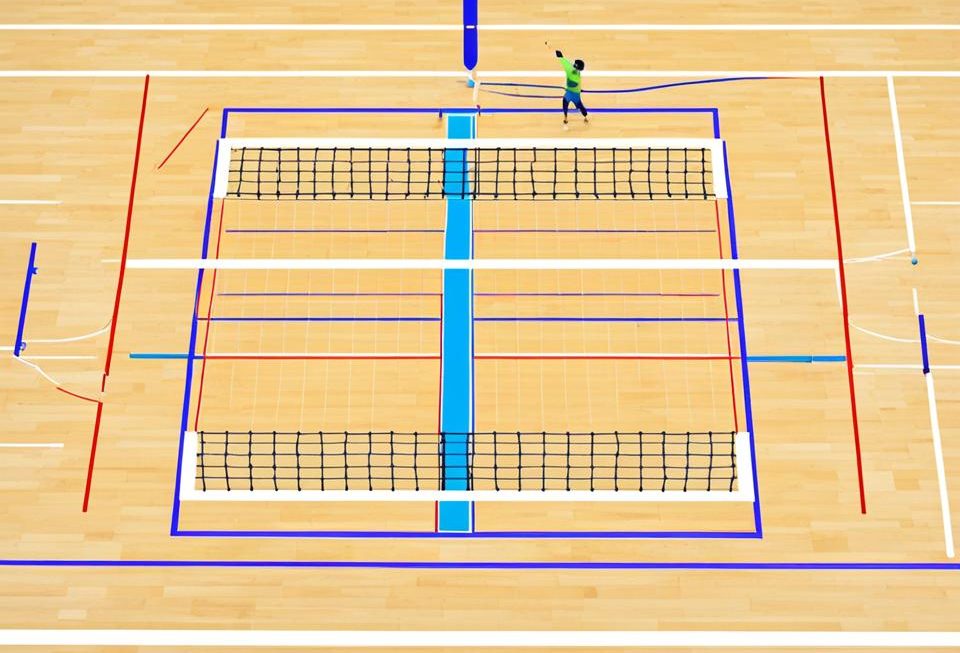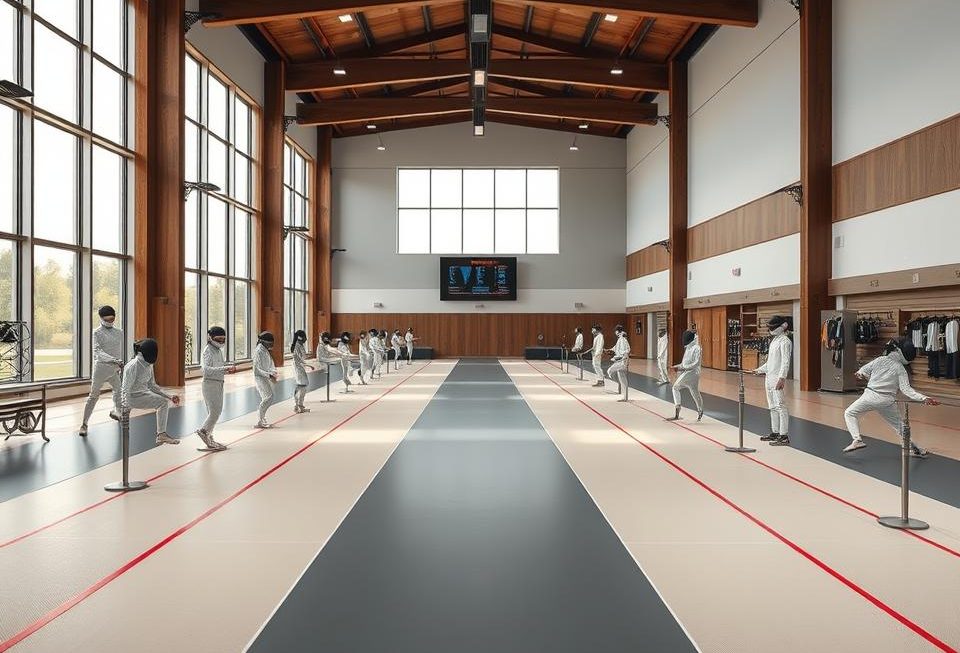Volleyball is a popular team sport played on a court with a net separating the two teams. The objective is to hit the ball over the net and into the opposing team’s court without letting it touch the ground on your side. While volleyball requires the use of various techniques, such as passing, setting, and spiking, the rules explicitly prohibit players from kicking the ball. This article will delve into the official rules and regulations surrounding ball handling in volleyball, including the legal and illegal methods of contacting the ball. We will also explore other key aspects of the game, such as court dimensions, scoring, techniques, and equipment.
Read more interesting information at ::sportsnews1
Introduction to Volleyball Rules
Volleyball has a rich history, tracing its origins back to 1895 when it was invented by William G. Morgan, a physical education instructor in Holyoke, Massachusetts. Initially called “mintonette,” the game was designed as a less-strenuous alternative to basketball, quickly gaining popularity and evolving over the years into the dynamic sport we know today.
The Origin and Evolution of Volleyball
From its humble beginnings as a recreational activity, volleyball has undergone a remarkable transformation, with its rules and regulations constantly refined to enhance the game’s competitiveness and appeal. The International Volleyball Federation (FIVB) and national governing bodies, such as USA Volleyball, have played a pivotal role in establishing and maintaining the official rulebooks that guide the technical aspects of the sport, including legal and illegal ball handling, court dimensions, scoring, and equipment specifications.
Governing Bodies and Rulebooks
These comprehensive rulebooks serve as the foundation for the game, ensuring a consistent and fair playing experience for athletes and spectators alike. By adhering to the guidelines set forth by these governing bodies, players can develop their skills, engage in strategic team play, and participate in a competitive environment that upholds the core principles of volleyball.
Understanding the Court Dimensions
Volleyball is played on a standardized court that ensures fair and consistent gameplay. The official volleyball court measures 18 meters (59 feet) in length and 9 meters (29.5 feet) in width, with a net dividing the court in half. These precise dimensions create a level playing field for both teams, allowing them to compete on an equal footing.
Volleyball Court Markings
The volleyball court is clearly marked with boundary lines to delineate the playing area. These lines, typically made of a contrasting color, provide visual cues for players and officials to determine the in-bounds and out-of-bounds areas. Understanding the court markings is essential for players to navigate the court effectively and avoid committing violations.
Net Height and Positioning
The net that separates the two teams is a critical element of the volleyball court. The net is positioned at a height of 2.43 meters (7.9 feet) for men’s play and 2.24 meters (7.3 feet) for women’s play. This standardized net height ensures a fair and balanced competition, where both teams can challenge each other’s attacks and blocks with equal opportunity.
volleyball can you kick the ball
The rules of volleyball strictly prohibit players from kicking the ball. The only legal methods of contacting the ball are with the hands, arms, and, in some cases, the head or torso.
Ball Handling Techniques in Volleyball
Common ball handling techniques in volleyball include passing, setting, attacking (spiking), and blocking. These skills emphasize the use of the upper body and promote the development of specific volleyball techniques.
Illegal Contact with the Ball
Any intentional contact with the feet or legs is considered an illegal move and will result in a fault or a point awarded to the opposing team. This rule ensures that volleyball remains a sport that prioritizes the use of the upper body and encourages the mastery of core volleyball skills.
Legal Ball Contacts in Volleyball
In volleyball, players are permitted to make various legal contacts with the ball, including passing, setting, attacking (spiking), and blocking. These techniques are essential for coordinating team play and scoring points effectively.
Passing and Setting
Passing involves using the forearms, hands, or even the chest to direct the ball to a teammate. This fundamental skill allows players to control the ball and set it up for an attack. Setting, on the other hand, is the act of directing the ball to a position where it can be attacked, often by a teammate who is in a better position to score.
Attacking and Spiking
Attacking, or spiking, is the powerful hit that sends the ball over the net and into the opponent’s court. This offensive technique requires a high level of skill and coordination, as players must time their jump, generate sufficient force, and direct the ball with precision to score points.
Blocking and Defending
Blocking is a defensive technique where players jump and reach over the net to intercept the ball before it crosses the net. This can disrupt the opponent’s attack and allow the defending team to regain control of the ball. In addition to blocking, players must also focus on effective floor coverage and court positioning to defend against their opponents’ attacks.

Volleyball Scoring System
Volleyball is a captivating sport that is played in a best-of-five set format, with the first team to win the predetermined number of sets declared the victor of the match. Each individual set is played to 25 points, and a team must win by a margin of at least 2 points to secure the set. Points can be earned through a variety of means, including successful attacks, opponent faults (such as illegal ball handling or net violations), and service aces.
The scoring system is designed to promote strategic play, encourage skill development, and maintain a competitive and engaging gameplay experience for both players and spectators. Teams must carefully coordinate their offensive and defensive strategies to earn points and prevent their opponents from doing the same. The dynamic nature of volleyball, with its rapid rallies and changing momentum, keeps the game thrilling and unpredictable, ensuring that every point is hard-fought and meaningful.
| Scoring Mechanism | Description |
|---|---|
| Successful Attack | When a team successfully hits the ball over the net and into the opposing team’s court, they earn a point. |
| Opponent Fault | If the opposing team commits a rules violation, such as illegal ball handling or a net violation, the team on the other side of the net earns a point. |
| Service Ace | When a team’s serve is not returned successfully by the opposing team, the serving team earns a point. |
By understanding the intricate scoring system of volleyball, players and fans alike can better appreciate the strategic depth and competitive nature of the game. The combination of point-earning opportunities and the requirement to win by a margin of 2 points creates an engaging and suspenseful atmosphere, where every point can swing the momentum of the match.
Volleyball Equipment and Specifications
The sport of volleyball is played with a precisely designed ball that meets strict size and weight requirements. The official volleyball must be spherical, with a circumference measuring between 65-67 cm (25.6-26.4 inches) and a weight ranging from 260-280 grams (9.2-9.9 ounces). This specific ball size and weight ensures optimal control, bounce, and performance during gameplay.
Ball Size and Weight
The volleyball is typically made of either leather or a high-quality synthetic material, featuring a unique panel pattern that contributes to the ball’s desirable characteristics. This panel design provides the appropriate level of bounce and control, allowing players to execute a variety of techniques, such as setting, spiking, and serving, with precision and consistency.
Court Surface and Markings
In addition to the ball specifications, the volleyball court itself must adhere to specific requirements. The playing surface is typically composed of a hardwood or synthetic material that offers a stable and consistent platform for gameplay. The court is clearly marked with boundary lines, service lines, and other visual cues that are essential for maintaining the fairness and integrity of the game. These court markings help players and officials alike navigate the playing area and ensure that all actions and decisions are made within the defined rules and regulations.
Volleyball Techniques and Strategies
Volleyball players employ a variety of techniques and strategies to be successful on the court. The serve is the initial hit that starts each rally, and players can use different serving techniques, such as the overhand serve, underhand serve, and jump serve, to challenge the opposing team.
Serving Techniques
The overhand serve is a powerful, overhead motion that can generate significant speed and spin on the ball, making it difficult for the receiving team to control. The underhand serve, also known as the “floater,” is a more controlled and consistent technique that can be effective in disrupting the opponent’s attack. The jump serve, on the other hand, involves the player jumping and striking the ball from above the head, adding an extra element of velocity and unpredictability to the serve.
Offensive and Defensive Formations
Offensive strategies often involve coordinating attacks, such as quick sets and power spikes, to catch the opposing team off guard and score points. Defensive strategies, in contrast, focus on effective blocking and floor coverage, with players positioning themselves to anticipate and react to the opponents’ attacks. Teams may also adopt specific formations and rotations to optimize their positioning and anticipate the opponents’ moves.
Mastering these techniques and strategies is crucial for achieving success in volleyball. By combining a variety of serving options, coordinated offensive plays, and solid defensive positioning, teams can create a well-rounded and effective game plan that challenges their opponents and leads to victory.
Rules for Specific Situations
While the general rules of volleyball prohibit kicking the ball, the sport also has specific regulations for various game situations. These specialized rules ensure the fairness and consistency of the game, while also allowing for strategic adjustments by the teams.
Net Violations
During play, any contact with the net by a player is considered a fault and results in a point or side-out for the opposing team. This includes touching the net with any part of the body, as well as crossing the center line and interfering with the opponent’s play. These net violations are strictly enforced to maintain the integrity of the game and prevent unfair advantages.
Rotation and Substitution Rules
The rotation and substitution rules in volleyball dictate the order in which players must rotate positions on the court, as well as the conditions under which substitutions can be made. Players must rotate clockwise after each rally, with the server always being the player in the back-right position. Substitutions are limited and must be made during specific intervals, such as between sets or during timeouts, to ensure fairness and prevent excessive disruptions to the flow of the game.

Volleyball Officiating and Refereeing
Volleyball matches are officiated by a team of referees, including a first referee and a second referee, who are responsible for enforcing the rules and maintaining the flow of the game. These officials play a crucial role in ensuring fairness, consistency, and adherence to the regulations throughout the match.
Referee Hand Signals
Referees utilize a series of standardized hand signals to communicate their decisions to the players and spectators. These signals indicate a variety of game situations, such as faults, points, substitutions, and timeouts. The referees’ hand signals serve as a clear and unambiguous method of relaying information, promoting a shared understanding of the game’s progress and outcomes.
Protest Procedures
In the event of a disagreement or dispute over a referee’s decision, the rules of volleyball provide specific procedures for addressing such protests. These procedures outline the appropriate channels for players or coaches to voice their concerns, as well as the steps the referees must take to review and resolve the issue. By following these established protest protocols, the game can continue in a fair and objective manner, with the referees upholding the integrity of the competition.
Volleyball Variations and Adaptations
While the fundamental rules of volleyball remain consistent across different formats, the sport has evolved to include a variety of variations and adaptations. One of the most prominent is the game of beach volleyball, which is played on a sand court with a lower net and distinct scoring system.
Beach Volleyball Rules
Beach volleyball is played on a court that measures 8 meters (26 feet) wide and 16 meters (52 feet) long, with a net height of 2.43 meters (7.9 feet) for men and 2.24 meters (7.3 feet) for women. The scoring system in beach volleyball is different from the traditional indoor game, with matches typically played in a best-of-three format, where the first team to win two sets wins the match. Each set is played to 21 points, with a team needing to win by a margin of at least 2 points.
Recreational and Casual Play
In addition to the competitive professional and collegiate levels, volleyball is also widely enjoyed in recreational and casual settings. These informal leagues and pick-up games often feature modified rules and formats to accommodate different skill levels, court sizes, or player numbers. For example, some recreational leagues may allow for a fourth contact before the ball must be returned, or they may use a smaller court or softer, lighter balls to make the game more accessible to players of all abilities. These adaptations help to expand the reach of the sport and allow individuals of diverse backgrounds to participate in the fun and camaraderie of volleyball.
Conclusion
In conclusion, the rules of volleyball clearly prohibit players from kicking the ball, emphasizing the use of the hands, arms, and upper body in legal ball handling techniques. Understanding the court dimensions, scoring system, equipment specifications, and other key regulations is essential for both players and spectators to fully appreciate and enjoy the sport of volleyball.
By adhering to these rules, players can develop their skills, engage in strategic team play, and participate in a fair and competitive environment. Whether you’re a seasoned volleyball enthusiast or a newcomer to the sport, this comprehensive overview of the rules and regulations provides a solid foundation for understanding and appreciating the nuances of this dynamic and exciting game.
From the origins of the sport to the intricate details of ball handling and officiating, the rules of volleyball ensure that the game remains true to its core principles of teamwork, sportsmanship, and skill development. By mastering these rules and regulations, players and teams can strive for excellence, push the boundaries of their abilities, and contribute to the growth and popularity of this captivating sport.



